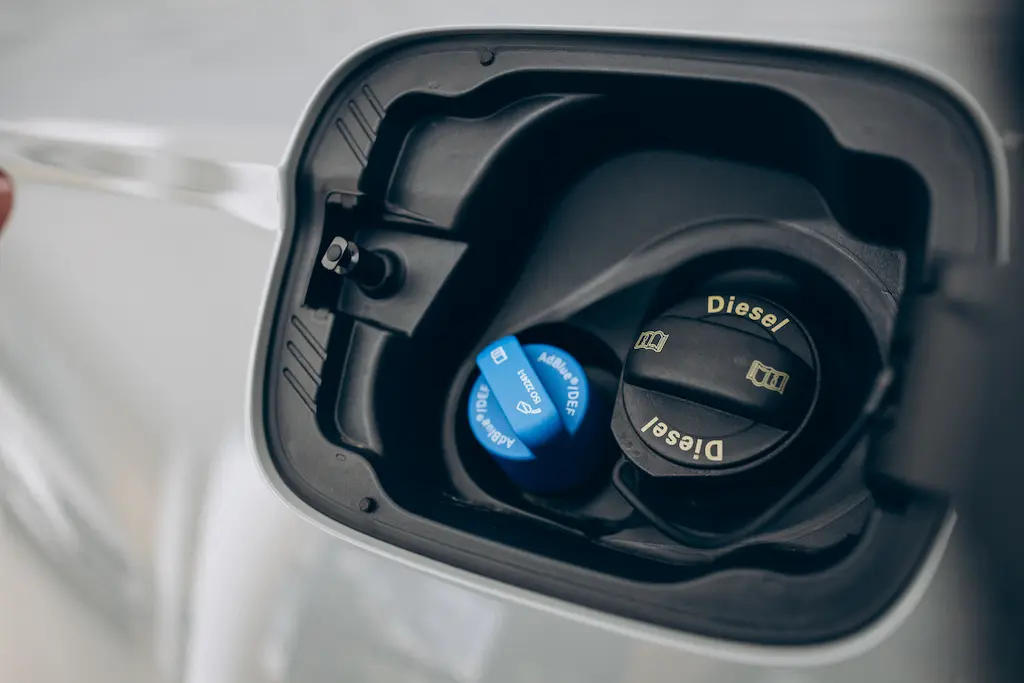AdBlue has become an essential additive for modern diesel vehicles. If you drive a car with SCR technology, you’ve probably asked yourself: how often do you need to refill AdBlue? This is a common question among drivers, especially because a low level can prevent the engine from starting.
In this article, we’ll answer this question clearly and in detail, while also explaining what AdBlue is, how it works, and how to keep your vehicle in optimal condition.
What is AdBlue and why is it important?
AdBlue is a solution made of demineralized water and 32.5% urea. Its main function is to reduce harmful nitrogen oxide (NOx) emissions produced by diesel engines.
This additive is used in SCR (Selective Catalytic Reduction) systems. When AdBlue is injected into the exhaust, it reacts chemically to convert NOx into nitrogen and water vapor — harmless components for the environment.
Benefits of AdBlue:
- Reduces pollutant emissions
- Helps comply with Euro 6 standards
- Improves the environmental impact of diesel
- Prevents fines and driving restrictions in urban areas
How often do you need to refill AdBlue?
The frequency of refilling the AdBlue tank depends on several factors. Let’s break them down.
Factors that influence consumption:
- Average consumption: between 1 and 2 liters per 1,000 km
- Tank capacity: typically between 10 and 20 liters
- Driving style: urban trips increase usage
- Vehicle make and model
General estimates:
- Passenger cars: every 7,000 to 10,000 km
- Commercial vehicles: every 2,000 to 6,000 km
Important: If AdBlue runs out, many vehicles won’t start as regulations require it to be present for the engine to operate.
Are you interested in home heating oil delivery?
At Lisbona Oil, we specialize in quality home heating oil delivery for vehicles.
How do you know when you need to refill AdBlue?
Cars with SCR systems display automatic warnings on the dashboard.
Common signs you need to refill AdBlue:
- Warning light with message “Low AdBlue level”
- Countdown of remaining kilometers
- Amber warning light
Once the warning appears, you typically have 2,000 to 2,400 km to refill before the system prevents engine ignition.
Where is AdBlue refilled?
The location of the AdBlue filler depends on the vehicle manufacturer.
Common refill points:
- Next to the fuel tank (blue cap)
- In the trunk, under the carpet
- Under the hood
If you prefer convenience, you can opt for AdBlue home delivery services — ideal for fleets or time-strapped individuals.
What happens if you run out of AdBlue?
Running out of AdBlue won’t damage the engine, but it will prevent the car from starting. That’s because the SCR system cannot operate without the additive, and without it, the car fails to meet emissions standards.
What to do:
- Refill the tank as soon as possible
- Use certified containers and follow manufacturer instructions
- Avoid partial refills (the system may not reset)
Advantages of keeping AdBlue levels in check
Refilling AdBlue regularly offers several benefits:
- Prevents unexpected vehicle shutdowns
- Reduces the risk of engine system faults
- Improves environmental performance
- Ensures compliance with emissions regulations
There are also convenient services like home heating oil supply that also include AdBlue refills.
How much does it cost to refill AdBlue?
The cost of AdBlue depends on the format and where you buy it.
Price estimates:
- 5L or 10L canisters: between €10 and €20
- Gas stations: around €0.60 per liter
- Workshops or delivery services: price varies by location
In areas like home heating oil in Granada, some providers also offer AdBlue as part of their service, making vehicle maintenance easier without travel.
Tips for proper AdBlue use
- Do not mix with water or other fluids
- Store in a cool place away from direct sunlight
- Use only ISO 22241 certified products
- Check your vehicle manual before refilling
Conclusion
Knowing how often to add AdBlue is essential if you drive a modern diesel vehicle. While frequency varies by usage, checking every 7,000 km for passenger cars is a good general rule.
Remember: ignoring AdBlue levels can leave you stranded. Opt for preventive maintenance, services like AdBlue home delivery, and pay attention to your vehicle’s alerts. This way, you’ll keep your car running smoothly and help protect the environment.
Looking for more helpful tips on diesel vehicle maintenance? Visit our latest blog on how to calculate your car’s fuel consumption to optimize your trips.
We would also like to remind you that, as a service station, we have a gas station with a shop to meet any type of need.
